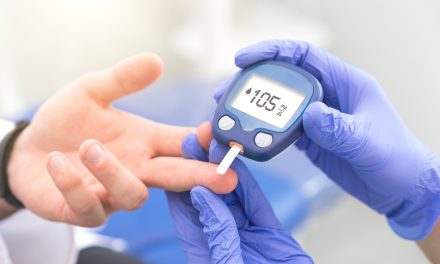Type 2 diabetes is a serious condition impacting millions of people worldwide. It is considered dangerous due to its potential to cause various health complications, including heart disease, nerve damage, and kidney issues.
Many factors can increase the risks associated with type 2 diabetes, such as poor diet, sedentary lifestyle, and smoking.

Managing this condition requires lifestyle changes, such as adopting a healthy diet and regular physical activity. Effective management also includes regular monitoring of blood sugar levels to prevent further complications.
In addition, early detection and proper treatment are critical in reducing the severity of type 2 diabetes.
Ongoing support from healthcare professionals is vital for effective self-care and treatment. For those living with type 2 diabetes, recognizing signs of blood sugar fluctuations and having a solid plan in place can make a significant difference.
Key Takeaways
- Type 2 diabetes can lead to serious health complications without proper management.
- Lifestyle changes are essential in managing blood sugar levels effectively.
- Regular monitoring and support from healthcare professionals are crucial.
Understanding Type 2 Diabetes

Type 2 diabetes is a chronic condition affecting insulin regulation in the body. It is characterized by high blood sugar levels and can lead to severe health issues if not managed.
This section explores the factors contributing to the disease, how to spot early signs, and diagnostic methods commonly used.
Causes and Risk Factors
Common causes of type 2 diabetes involve insulin resistance, where the body’s cells do not use insulin effectively. The pancreas tries to compensate by producing more insulin, but over time, it can’t keep up.
Certain risk factors increase the likelihood of developing type 2 diabetes. Obesity and being overweight are significant contributors. Other factors include prediabetes, a family history of diabetes, and conditions like polycystic ovary syndrome. Gestational diabetes during pregnancy also raises the risk.
An inactive lifestyle and poor dietary habits contribute as well. Addressing these risks, such as improving diet and increasing activity, can help lower the chances of developing this condition.
Symptoms of Diabetes
Recognizing early symptoms can be crucial for managing type 2 diabetes effectively. Common symptoms include increased thirst and frequent urination, as the body struggles to process excess glucose.
Fatigue and unexplained weight loss may also occur, as well as blurred vision. Tingling or numbness in hands and feet can result from nerve damage. Some people experience slow-healing sores or frequent infections due to weakened immunity. Being aware of these signs can prompt individuals to seek medical advice early, potentially reducing complications.
Diagnosis Process
Diagnosis of type 2 diabetes involves several tests to measure blood glucose levels. The A1C test indicates average blood sugar levels over the past two to three months.
Another commonly used test is the fasting plasma glucose test, which requires fasting overnight before measuring blood sugar. The oral glucose tolerance test measures blood sugar before and two hours after drinking a sweetened drink.
Regular screening is essential, especially for those with risk factors. Early detection through these tests can help manage the disease before it progresses significantly.
The Impact of Lifestyle on Type 2 Diabetes

Lifestyle choices play a significant role in managing type 2 diabetes. Engaging in regular physical activity, maintaining a balanced diet, and keeping a healthy weight can have a positive impact on blood sugar levels and overall health.
Physical Activity and Exercise
Regular exercise is crucial for people with type 2 diabetes. It helps to improve insulin sensitivity, which allows cells to use glucose more effectively.
Engaging in activities like walking, cycling, or swimming for at least 30 minutes daily can significantly lower blood sugar levels and reduce the risk of complications.
Physical activity also aids in reducing stress and boosts mental health. Strength training exercises are beneficial as they help build muscle, which can further enhance metabolic processes.
Simple activities such as taking stairs instead of the elevator or doing household chores can contribute to overall physical activity and improve glucose control.
Diet and Nutrition
A balanced diet is essential for managing type 2 diabetes. Emphasizing healthy eating, focusing on whole grains, lean proteins, and non-starchy vegetables can help stabilize blood sugar levels.
Including foods rich in fiber, such as fruits and legumes, assists in slowing down sugar absorption.
A well-planned meal plan can help individuals avoid high-calorie and sugary foods, reducing the risk of blood sugar spikes. Managing portion sizes is also critical in maintaining energy balance.
It’s important to limit saturated fats and focus on healthy fats from sources like nuts and olive oil. Regular meals and snacks can prevent sudden drops in blood sugar levels.
Weight Management
For many, weight management is a key component in controlling type 2 diabetes. Losing even a small amount of weight can improve insulin sensitivity and lower blood glucose levels.
A healthy lifestyle often includes regular exercise and a balanced diet, which together facilitate weight loss.
Guidance from healthcare professionals can be beneficial in setting realistic weight loss goals and developing strategies for achieving them.
Consistent monitoring and adjustments in lifestyle can lead to long-term success in managing diabetes. By focusing on gradual changes, individuals can achieve sustainable weight management and improved health outcomes.
Type 2 Diabetes Treatments and Management

Managing type 2 diabetes involves monitoring blood sugar levels, taking medications, and exploring emerging therapies. Proper management can help prevent complications and maintain a healthy lifestyle.
Blood Sugar Monitoring
Monitoring blood sugar levels is crucial for people with type 2 diabetes. They often use a glucose meter or a continuous glucose monitor (CGM) to track their levels throughout the day.
These devices provide real-time data, alerting users if their blood sugar is too high or low.
Regular monitoring helps in adjusting food intake, physical activity, and medications to maintain stable blood glucose. Keeping a log of these readings can be useful for healthcare providers to make informed treatment adjustments.
Consistent blood sugar monitoring aids in achieving long-term glycemic control and prevents complications.
Medications and Insulin Therapy
People with type 2 diabetes often rely on medications and sometimes insulin therapy to control their blood glucose.
Metformin is commonly prescribed as it helps lower blood sugar by improving the body’s response to insulin. Other medications include sulfonylureas and meglitinides, which stimulate insulin production.
Some might use DPP-4 inhibitors, SGLT2 inhibitors, or GLP-1 agonists to regulate blood sugar in different ways.
In cases where medications aren’t enough, insulin therapy can be added to the treatment plan. It plays a crucial role in managing blood sugar levels and reducing the risk of diabetes-related complications.
Emerging Therapies
Emerging therapies in the treatment of type 2 diabetes focus on improving efficacy and minimizing side effects.
New treatments often aim to enhance the body’s natural insulin production or mimic its effects.
Researchers are investigating once-weekly insulin injections and innovative non-insulin drugs to enhance glucose control.
Additionally, advances like stem cell therapies and artificial pancreas systems are being explored. These emerging therapies hold promise in revolutionizing diabetes care by offering new solutions for those who find conventional treatments inadequate.
Continuous research aims to improve quality of life and potentially offer a cure for diabetes in the future.
Complications and Comorbidities

Type 2 diabetes can cause various health issues that affect a person’s quality of life. These complications range from immediate problems like blood sugar fluctuations to long-term conditions that can damage vital organs.
Short-Term Complications
One immediate concern for individuals with type 2 diabetes is blood sugar levels fluctuating outside the normal range.
Hypoglycemia, or low blood sugar, can cause dizziness, confusion, and even seizures. People might experience these symptoms if they skip meals or exercise excessively.
On the other hand, high blood sugar or hyperglycemia can lead to diabetic ketoacidosis and hyperglycemic hyperosmolar nonketotic syndrome. These conditions result from high glucose levels and can lead to dehydration and require emergency medical attention.
Monitoring blood sugar levels regularly is vital to prevent these dangerous situations.
Long-Term Consequences
Over time, persistent high blood sugar can lead to long-term health complications.
Heart disease is common, increasing the risk of heart attacks and strokes. Neuropathy, or nerve damage, can cause pain and numbness, particularly in the legs and feet.
Kidney disease often develops from prolonged diabetes, sometimes resulting in kidney failure. Eye damage, such as diabetic retinopathy, can lead to blindness, while hearing impairment is another possible issue.
Moreover, there is potential for mental health conditions like Alzheimer’s disease and dementia. Maintaining balanced blood sugar levels helps mitigate these risks.
Self-Care and Regular Monitoring
Managing type 2 diabetes requires consistent self-care and keeping track of blood sugar levels. Understanding the right blood sugar targets and engaging in effective self-care practices are crucial for controlling the disease.
Understanding Blood Sugar Targets
Blood sugar levels are key indicators of how well diabetes is managed.
For many individuals, maintaining a fasting blood sugar level between 70 to 130 mg/dL is recommended. Regular tests, like the A1C, help monitor average blood glucose over 2-3 months, with a target usually below 7%.
Tools like continuous glucose monitoring offer real-time insights. These devices help track normal blood sugar levels and alert when levels reach critical points.
Regular checks, even at home, are vital. A glucose tolerance test may sometimes be used to understand how efficiently the body processes sugar.
Regular monitoring helps adjust daily routines and medications, ultimately reducing complications. Staying informed about personal targets fosters better management.
The Role of Self-Care
Self-care includes dietary changes, regular exercise, and taking prescribed medications. These practices can help maintain stable blood sugar levels.
A healthy lifestyle plays a significant role in managing diabetes effectively.
Eating balanced meals with the right carbohydrates helps stabilize blood sugar. Physical activity improves insulin sensitivity, making it easier to maintain blood glucose levels.
Patients should also adhere to regular glucose checks as part of their routine.
Adopting these habits is not just about management; it prevents complications. Self-care habits lead to better outcomes, allowing individuals to live healthier lives.
Recognizing Hypo- and Hyperglycemia
Understanding the symptoms of low and high blood sugar is vital for managing type 2 diabetes. Immediate actions can prevent serious complications associated with both hypo- and hyperglycemia.
Identifying Symptoms
Recognizing the symptoms of low blood sugar, or hypoglycemia, is crucial. Common signs include shakiness, sweating, confusion, irritability, and increased hunger. These symptoms occur because the body needs more glucose in the bloodstream.
If blood sugar continues to drop, it can lead to more severe symptoms like confusion or unconsciousness. That’s why prompt identification is key.
On the other hand, hyperglycemia, which is high blood sugar, might present as excessive thirst, nausea, fatigue, and the presence of ketones in urine. If left unmanaged, it can lead to complications such as diabetic ketoacidosis.
Immediate Management Strategies
Quick action is essential when dealing with hypoglycemia. Consuming fast-acting carbohydrates like glucose tablets or fruit juice can quickly raise blood sugar levels.
Keeping a glucagon kit handy is also recommended for severe cases, ensuring that someone nearby can administer it.
For hyperglycemia, increasing fluid intake helps flush excess sugar from the bloodstream. Insulin adjustments may be necessary, but should only be made following a doctor’s advice.
Both conditions require regular monitoring of blood glucose levels. This helps in taking timely corrective measures, ensuring overall stability.
Maintaining a diabetes management plan, including diet and exercise, further aids in preventing these extreme fluctuations.
Support and Healthcare Team
Managing Type 2 diabetes involves constant care and attention. People with diabetes need a solid healthcare team and a strong support network. These groups play crucial roles in helping manage diabetes effectively.
Accessing Professional Care
A good healthcare team is vital. It often includes doctors, nurses, and maybe an endocrinologist. They guide patients in managing diabetes symptoms like frequent urination and blurry vision.
Keeping regular appointments helps keep health on track.
Medications and lifestyle changes are tailored to each person. Changes in symptoms, like increased thirst or sleep apnea, should be reported.
Healthcare professionals also help manage stress and emotional health, as well.
Regular check-ups help adjust diabetes medication and treatment plans. It’s vital for patients to feel comfortable asking their healthcare team questions. This ensures they understand how to manage their condition effectively.
Building a Support Network
Diabetes can be stressful and sometimes lead to depression. That’s why having a strong support network is important. Family, friends, and support groups are valuable for emotional encouragement.
These networks offer practical help, like reminding about medication or attending appointments.
Support group meetings, either in-person or online, allow sharing of experiences and advice.
People managing diabetes can talk about challenges and successes. This reduces feelings of isolation and helps them stay motivated.
Being part of a community strengthens emotional and mental resilience. This aids in managing daily life with diabetes.
Prevention and Early Detection
Preventing type 2 diabetes involves managing risk factors such as blood sugar levels and lifestyle changes. Early detection through regular screening can significantly impact the management of the disease.
Reducing Risk of Development
Taking specific actions can lower the risk of developing type 2 diabetes. Lifestyle changes like maintaining a balanced diet, regular exercise, and avoiding smoking can help manage weight and lower blood sugar.
For those with prediabetes, a healthy lifestyle is vital in preventing the progression to diabetes.
Monitoring blood sugar levels regularly through a glucose meter can alert individuals to needed changes.
It’s important to focus on risk factors such as high blood pressure and cholesterol, as these affect blood sugar.
Importance of Early Screening
Early detection of type 2 diabetes can be facilitated through regular screening tests. A fasting blood sugar test is a common way to identify high blood sugar levels.
Screening helps in catching symptoms early, allowing for timely intervention.
This early approach can prevent complications associated with diabetes mellitus.
Doctors often recommend screening for those with a family history of diabetes or those exhibiting early symptoms. With proper screening, individuals can start treatment earlier, improving long-term outcomes.
Frequently Asked Questions
Type 2 diabetes can lead to various health complications if not managed well. Understanding potential risks, prevention strategies, and symptoms is crucial for those affected by or at risk of this condition.
What complications can arise from type 2 diabetes?
Complications from type 2 diabetes include cardiovascular diseases, nerve damage, and vision problems. Kidney damage is also a risk, which could lead to more serious conditions.
How might type 2 diabetes affect life expectancy?
Type 2 diabetes can shorten life expectancy due to complications such as heart disease and stroke. Early detection and proper management can help mitigate these risks and improve quality of life.
Can lifestyle changes prevent the onset of type 2 diabetes?
Lifestyle changes, like maintaining a healthy diet and regular exercise, can significantly reduce the risk of developing type 2 diabetes. These steps help manage weight and improve insulin sensitivity.
Are there genetic factors that contribute to type 2 diabetes?
Genetic factors play a role in the likelihood of developing type 2 diabetes. A family history of diabetes can increase an individual’s risk.
What are the common symptoms indicating type 2 diabetes in women?
Common symptoms in women include increased thirst and frequent urination. Fatigue and unexplained weight loss are also signs to watch for. Some women may experience yeast infections more frequently.
Is there a permanent cure for type 2 diabetes?
Currently, there is no permanent cure for type 2 diabetes.
Management through lifestyle changes and medication can help control the condition.















